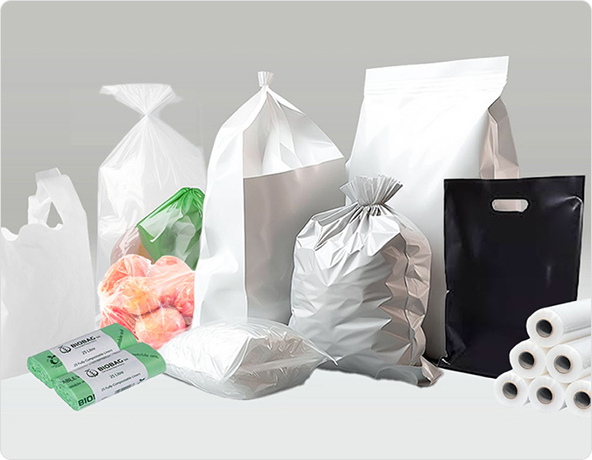Our Automatic Bag Making Machines offer high automation, production efficiency, and flexibility by integrating cutting, forming, printing, and sealing processes to produce finished products.


The garbage bags include draw tape bags, star sealed bags, flat or gusseted bottom sealed bags with folding,etc. Garbage bags are one of the most common uses for a bag on roll machine. These machines are commonly used for the production of garbage bags due to the high volume production requirements and the need for bags in a variety of sizes and thicknesses.
Retailer bags include vegetable bags, t-shirt bags, flat or gusseted bottom sealed bags, start sealed bags, etc. Retail bags are another popular plastic bag produced by a bag on roll machine. These bags are often used in grocery stores as well as other locations where shoppers can purchase items such as food or household supplies. Bag on roll machines can be used to produce a variety of retail bags, including shopping bags, carryout bags.
Disposable laundry bags are often used in hotels, dormitories, and other shared living spaces to help keep dirty laundry separate from clean laundry. A bag on roll machines can be used to produce both small and large sized laundry bags that are made from different types of materials.
Disposable plastic table covers or table cloths are a popular choice for events and settings. They offer convenience and protection, which is why they're widely used in banquets, picnics, outdoor events and restaurants in arab countries. The bag on roll machine is the perfect solution for mass production of plastic table covers as it ensures high speed and efficiency in the production process. With its advanced technology and features, the machine can produce high-quality plastic table covers that meet the needs of various industries.
Discover your application needsTraining: Operators must understand machine operation and emergency procedures.
Continuous Learning: Ongoing training keeps operators updated on safety and machine handling.
Hands-on Practice: Practical training helps reinforce safety knowledge.
PPE: Operators must wear gloves, goggles, protective clothing, and hearing protection as needed.
Inspect PPE: Regularly check gear for damage and replace as necessary.
Safety Checks: Inspect guardrails, sensors, and emergency stops regularly.
Repair Damages: Immediately fix any damaged safety components.
Accessible Stops: Emergency stops must be clearly labeled and easy to reach.
Train Operators: Ensure operators can quickly activate emergency stops.
Test Functionality: Regularly test emergency stops to confirm they work.
Report Issues: Encourage operators to report safety concerns and near -misses.
Safety Audits: Conduct regular safety reviews with operator input.
Safety Meetings: Hold regular meetings to discuss and improve safety practices.
GET A QUOTE